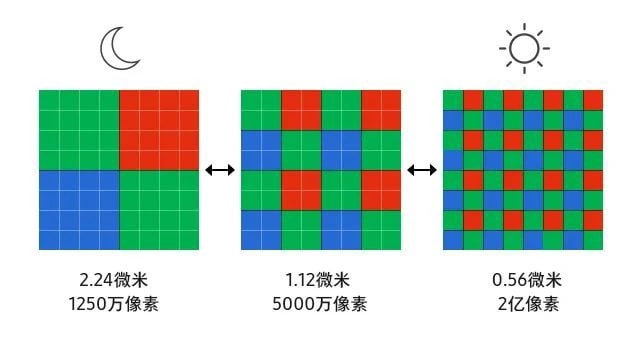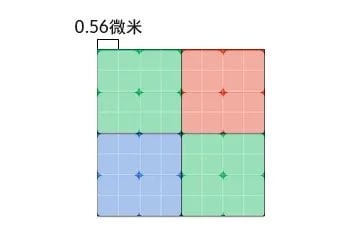News
Samsung HPX 200MP camera launched for Galaxy S23 Ultra with Tetra²pixel, 0.56μm small pixels

On October 20, Samsung introduced the new 200MP image sensor (mobile camera) named ISOCELL HPX. It’s the third 200MP camera from the company after the ISOCELL HP1 and ISOCELL HP3.
The brand new HPX 200MP camera sensor might debut with the next-gen Samsung flagship smartphone – Galaxy S23 Ultra. Compared to the HP1 and HP3, it boasts some advanced capabilities for photography.
The company says images captured by Samsung’s new ISOCELL HPx 200MP camera sensor can maintain 12.5MP sharpness even when enlarged to four times the size of the original image.

However, the new 200MP ISOCELL HPX continues the Korean tech giant’s smallest 0.56μm pixel. The Deep Trench Isolation technology increases sensitivity to capture clear and vivid images by separating each pixel individually.
Moreover, the 0.56μm pixel size can also reduce the area of the camera module by 20%, making the body of the smartphone thinner and smaller in order to maintain the design of the flagship.

Thanks to the Tetra²pixel (sixteen pixels in one) technology, Samsung ISOCELL HPX can automatically switch to 3 lighting modes according to light conditions, which are as follows:
- In a well-lit environment, the pixel size remains at 0.56μm, delivering 200MP
- In a low-light environment, the pixels are converted to 1.12μm, presenting 50MP
- In low-light environments, sixteen pixels are combined into one, resulting in a 2.24μm – 12.5-megapixel sensor
The company claims that the Tetra²pixel tech allows ISOCELL HPX to provide a good shooting experience in low light conditions, and even in the case of limited light sources.

Furthermore, the ISOCELL HPX also equips the Super QPD AF solution to enable ultra-fast and ultra-precise AF. It uses micro-lens overlaid on four adjacent pixels, and the sensor can achieve fast and precise focusing by detecting horizontal and vertical phase differences.
ISOCELL HPX provides users with different video shooting options as part of allowing users to shoot 8K video at 30fps, and supports seamless dual HDR (High Dynamic Range) in 4K and FHD (Full HD) modes.
Samsung also noted that the Smart ISO Pro technology gives the ISOCELL HPX a high dynamic range and the ability to capture virtually unlimited color combinations.
Single-frame progressive HDR (Staggered HDR), powered by Smart ISO Pro technology, captures shadows and highlights in the scene at three different exposures: low, medium, and high, depending on the shooting environment.

| Source |
News
Here’s why Google Messages replaced Samsung Messages on Galaxy devices

Samsung’s latest foldable phones come with Google Messages by default. The company has now revealed the reason behind this move on Galaxy devices. Samsung says Google Messages replaced Messages to foster RCS adoption.
According to AndroidAuthority, a source explained Samsung’s decision to switch to Google Messages as the default messaging app. The recently released Galaxy Z Flip 6 and Z Fold 6 come with Google Messages with RCS enabled by default.
Looks like promoting Google Messages on Galaxy devices will boost RCS adoption. Samsung Messages isn’t already installed on newer phones. However, one’s stopping you from getting it on your Galaxy from the Galaxy Store.
While many apps support the RCS feature, Google Messages offer the best user experience. Making it a default messaging app is an effort to boost the adoption of RCS tech. Apple is also preparing to bring RCS chat functionality to iMessage for iPhones.
What Samsung source said:
- Even if messaging apps follow the RCS standard, the availability may be limited depending on which app the other party uses. That’s why we decided to make Google Messages the common messaging platform, allowing Galaxy users to communicate more freely. This also enables a messaging app to respond to changes of the RCS standard more quickly and efficiently.
Previously, Samsung devices launched in the US came with two messaging apps. This time, the company has removed the Samsung Messages. During the first setup, users are notified that Google Messages is the default messaging application.
News
Samsung SmartThings gets ISO 27001 certified

Samsung SmartThings gained the international standard ISO/IEC 27001:2022 certification. The company has officially announced this major development in its global connected living platform.
SmartThings received ISO/IEC 27001:2022 certification for information security management systems. Certification reiterates that the SmartThings Cloud operates per international standards.
To be certified, a company has to meet the standard across a total of 123 detailed items, including policies for information security, access control for information assets, and incident response.
SmartThings receiving the ISO 27001 certification is the result of our sustained focus on the protection of information in a hyper-connected world with exponentially increasing intelligence.
Seungbum Choi, Executive Vice President and Head of Device Platform Center at Samsung Electronics said “this is just another step in our drive to fortify the platform’s security. We will continue to find new ways to ensure that SmartThings’ personalized services are provided even more safely.”

BSI Prez says that they have recognized that the operation capability and security level of Samsung SmartThings is excellent. It will further boost trust in the SmartThings platform and strengthen business competitiveness.
ISO 27001 is the leading global standard for ISMSs and was established by the International Organization for Standardization. It provides companies with guidance to manage the risks to information assets systematically and achieve information protection goals.
News
Dr.diary fuels Samsung Health with glycated hemoglobin algorithm
Samsung Health app integrated the Dr.diary (Doctor Diary) glycated hemoglobin feature. The blood sugar management platform announced the launch of its glycated hemoglobin estimation functionality on Samsung’s Health application.
According to ETNews, Dr.diary announced the integration of a glycated hemoglobin level feature in Samsung Health. Galaxy users will now be able to check the estimated glycated hemoglobin level provided by Doctor Diary.
To activate the feature, Health app users will have to permit certain conditions of data in the Blood Sugar service. It is worth noting that glycated hemoglobin is a key figure for diabetes diagnosis, which users will find worth using in the Health app.
Established in 2017, Dr.diary is a blood sugar management platform. It analyzes and predicts the changes in glycated hemoglobin using its own algorithm. Earlier this year, the firm secured a patent for “glycated hemoglobin estimation based on blood sugar data table.”
Song Je-yoon, CEO of Doctor Diary, said, “With our predicted glycated hemoglobin level prediction algorithm being installed in Samsung Health, more people will be able to recognize their glycated hemoglobin level and manage their health more efficiently.”

Glycated hemoglobin (HbA1c) is a standardized numerical value of the percentage of hemoglobin, such as hemoglobin, which has been glycated by glucose. Glycated hemoglobin reflects the average blood sugar level over the past 2-3 months.
Samsung Health (with Wear OS Galaxy Watch) users can conveniently check their estimated glycated hemoglobin level within the app and use this information to manage their blood sugar levels through diet and exercise.












